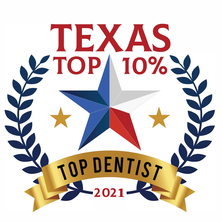
Dental Cleanings
Routine dental cleanings are important to maintaining good oral hygiene. Professional cleaning by a hygienist removes plaque and hard tarter build-up that develops even with careful brushing and flossing, particularly in areas that are difficult to reach. It is recommended you go in for a cleaning once every six months.
How it's done
You can expect your dental cleaning to last for one hour. A trained hygienist will perform the cleaning, and Dr. Pham may come in for an exam at the end of the appointment. Most people find that dental cleanings are painless, and do not cause any discomfort.
There are two important steps to a dental cleaning. The first step is scaling the teeth, during this the hygienist will remove the plaque and tartar from the tooth surfaces. This can be performed by hand or with electric scalers depending on the hygienists preference and amount of build-up. It can involve cleaning both above and below the gumline to remove all deposits.
How it's done
You can expect your dental cleaning to last for one hour. A trained hygienist will perform the cleaning, and Dr. Pham may come in for an exam at the end of the appointment. Most people find that dental cleanings are painless, and do not cause any discomfort.
There are two important steps to a dental cleaning. The first step is scaling the teeth, during this the hygienist will remove the plaque and tartar from the tooth surfaces. This can be performed by hand or with electric scalers depending on the hygienists preference and amount of build-up. It can involve cleaning both above and below the gumline to remove all deposits.
The second step is polishing to remove any final plaque and/or stain on the teeth. Polishing is performed by using a handpiece and a paste applied to the teeth.
The hygienist will also check the gums to determine if they are healthy. This is done by using a small measuring device called a probe. It is inserted into the pocket between the tooth and gum to obtain a measurement in millimeters. A healthy pocket measurement is between 1-3 millimeters. Any measurement larger then 3 millimeters indicates inflammation and possible infection due to the buildup under the gums. This may indicate the need for a deeper cleaning called a Full Mouth Debridement and possible Scaling/Root Planing of the root surfaces.
If a Full Mouth Debridement is indicated the hygienist will remove the buildup of hard and soft deposits both above and below the gumline using hand instruments or an electric scaler. As much of the bildup as possible will be removed at the visit but a follow up visit will be necessary to remove any residual buildup and check the condition of the gums.
If at the follow up visit the pockets are still at above normal measurements or have become larger, then a Scaling/Root Planing procedure will be needed. During this procedure the hygienist will use instruments to reach far below the gums to remove any remaining tarter and to make the surface as smooth as possible to make it more difficult for for plaque and tarter to adhere to in the future. Once this procedure has ben performed the patient is placed on a 3-4 month recall to help to prevent further damage to the gums.

